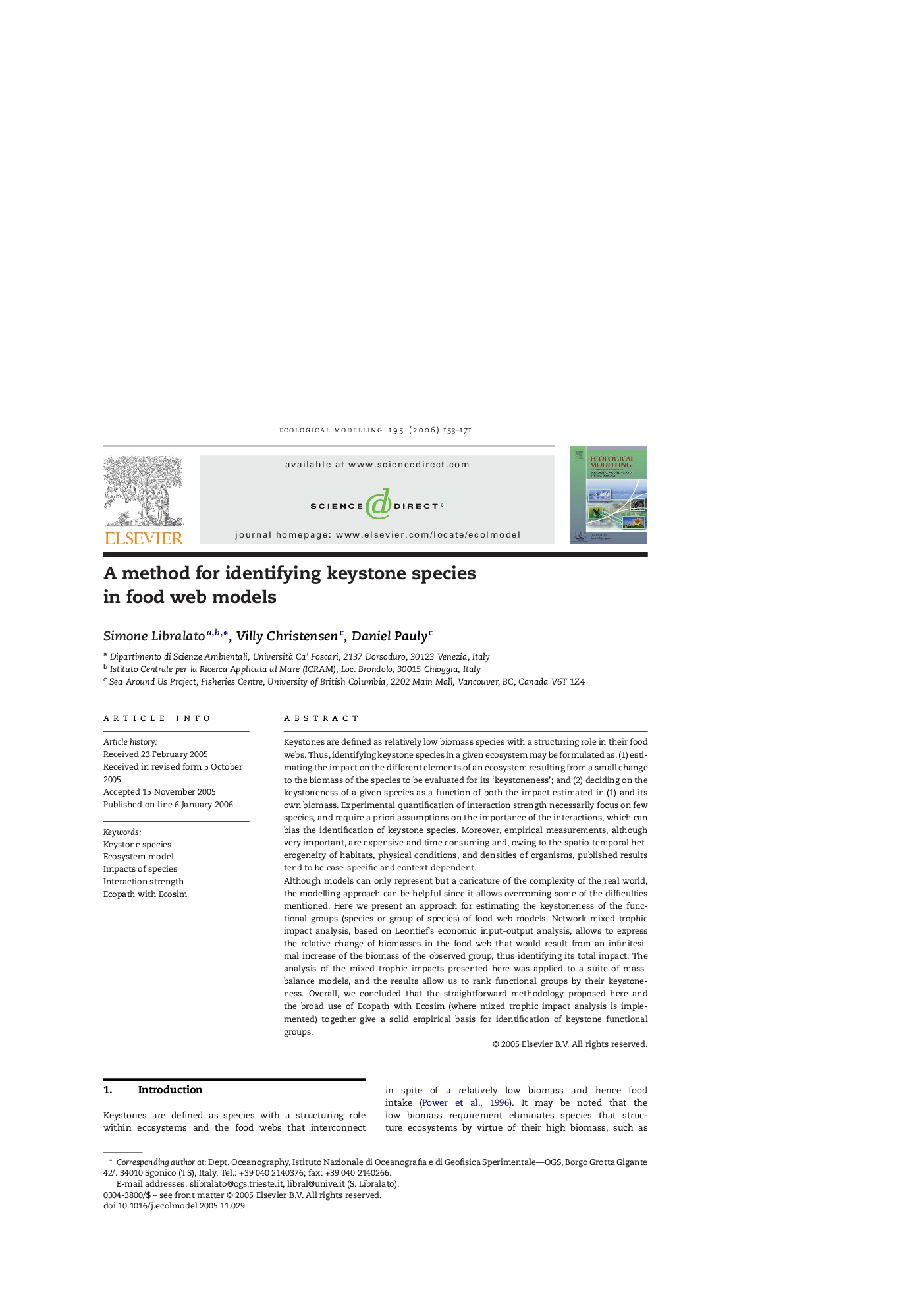| کد مقاله | کد نشریه | سال انتشار | مقاله انگلیسی | نسخه تمام متن |
|---|---|---|---|---|
| 4378997 | 1617563 | 2006 | 19 صفحه PDF | دانلود رایگان |

Keystones are defined as relatively low biomass species with a structuring role in their food webs. Thus, identifying keystone species in a given ecosystem may be formulated as: (1) estimating the impact on the different elements of an ecosystem resulting from a small change to the biomass of the species to be evaluated for its ‘keystoneness’; and (2) deciding on the keystoneness of a given species as a function of both the impact estimated in (1) and its own biomass. Experimental quantification of interaction strength necessarily focus on few species, and require a priori assumptions on the importance of the interactions, which can bias the identification of keystone species. Moreover, empirical measurements, although very important, are expensive and time consuming and, owing to the spatio-temporal heterogeneity of habitats, physical conditions, and densities of organisms, published results tend to be case-specific and context-dependent.Although models can only represent but a caricature of the complexity of the real world, the modelling approach can be helpful since it allows overcoming some of the difficulties mentioned. Here we present an approach for estimating the keystoneness of the functional groups (species or group of species) of food web models. Network mixed trophic impact analysis, based on Leontief's economic input–output analysis, allows to express the relative change of biomasses in the food web that would result from an infinitesimal increase of the biomass of the observed group, thus identifying its total impact. The analysis of the mixed trophic impacts presented here was applied to a suite of mass-balance models, and the results allow us to rank functional groups by their keystoneness. Overall, we concluded that the straightforward methodology proposed here and the broad use of Ecopath with Ecosim (where mixed trophic impact analysis is implemented) together give a solid empirical basis for identification of keystone functional groups.
Journal: Ecological Modelling - Volume 195, Issues 3–4, 15 June 2006, Pages 153–171